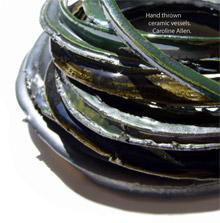Stephanie Koerner (University of Manchester)
Few materials are likely to have figured more recurrently than bronze in the very long history of reflection on the importance of creativity not only for understanding but especially for transforming the dynamics of what is actual and what is possible for human beings (e.g. Hesiod; Homer; Epicurus; Plato ; Aristotle;Lucretius; Cicero ).
Items crafted out of bronze, which were seen as evidence of the most important periods and places in the history of art (and even of the history of human life ways and cultures, in general) at the time when Wolfflin wrote in his Principles of Art History. The Problem of the Development of Style in Later Art (1922: ix) that “not everything is possible at all times, and certain thoughts can only be thought at a certain age.”
During the 20th century such arguments came to figure centrally in the parting of the ways of what is useful to describe as the ‘two cultures’ (to borrow Snow’s expression) of archaeology, art history and the humanities, in general. One of the most paradoxical features of such polemic has been the extent to which it hinges upon the series of dichotomies, which motivate one of the most difficult challenges posed for research on the Bronze Age. These include the notions of the natural versus the cultural (artificial) and of science versus art, which perpetuate challenges posed more or less explicit assumptions that we are forced to choose between comparative or contextual perspectives.
Over the last decade the concept of ‘creativity’ has become an increasingly important of efforts to ‘go beyond’ such dichotomies in fields as diverse as:
- those concerning the variety of Bronze Age life ways and cultures (archaeology);
- fields that are involved in the ways in which the Bronze Age is represented in museums (museology);
- and areas of specialisation in Classical Studies, which focus on materials that document the importance of bronze to contemporary conceptions of the actual, possible and creativity.
My broad aim with this presentation is to use the extraordinary recent exhibition entitled, Bronze, at the Royal Academy of Art in London (curated by Ekserdjian and Treves) as a window into the antiquity of the roles that bronze has played in reflection upon ‘creativity’ and the dynamics of what is humanly actual and possible. Emphasis falls upon examples, which bear directly upon the conference’s theme of “contemporary responses to the Bronze Age.” I will conclude with some suggestions about the relevance of this theme (and of ‘creativity’) for integrating contextual and comparative approaches to the Bronze Age.
References
- Allen, P.M. 1989. Modeling Innovation and Change, in S.E van der Leeuw and R. Torrence (eds) What’s New? A closer look at the process of innovation. London: Unwin Hyman, 258-280.
- Danto, Arthur 1997. After the End of Art: Contemporary Art and the Pale of History.
- Princeton: Princeton University Press.
- Ekserdjian, D. and Treves, C. 2012. Bronze. London: Royal Academy of Arts.
- Halliwell, S. 2002. The Aesthetics of Mimesis: ancient texts and modern problems. Princeton: Princeton University Press.
- Ingold, T. 2001. Being Alive: Essays on Movement, Knowledge and Description. London: Routledge.
- Matisse, H. 1973. Matisse on Art, translated by J. Flam. London: Phaidon, 58.
- Prigogene, I. 1997. The End of Certainty: time, chaos and the new laws of nature. London: Free Press.
- Stengers, I. (1997) Power and Invention. Minneapolis: University of Minnesota Press.
- Wolfflin, H. Principles of Art History. The Problem of the Development of Style in Later Art, translated by M.D. Hottingger. New York: Dover Press, ix.


